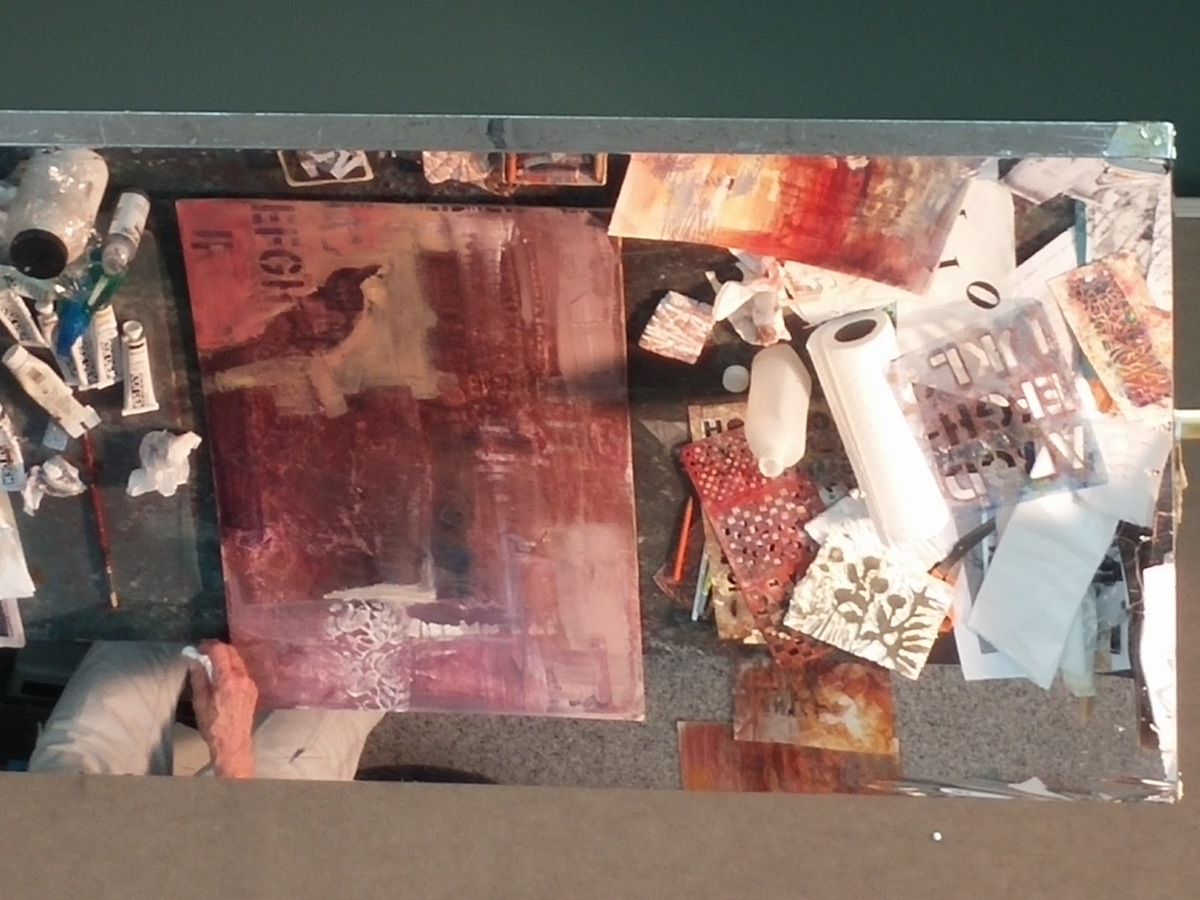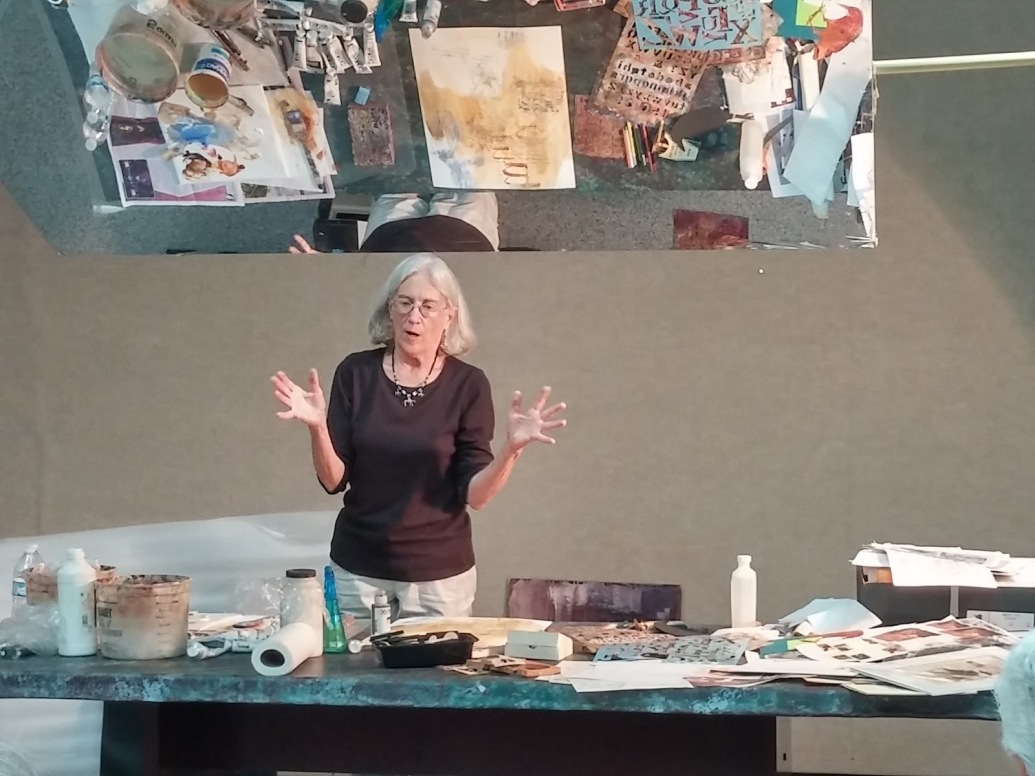PROGRAM JUNE 6, 2018 - SHARON STOLTZENBERGER
Tom Schroeder introduced our guest Sharon Stolzenberger, who presented the program “Creative Play”, a mixed media presentation designed to show ways of incorporating a playful approach to painting and working through creative blocks.
Sharon graduated from the School of Dayton Art Institute and began her career in art with Gibson Greeting Card Company, first as an illustrator, then art director. Now self-employed, she devotes full time to painting and doing outdoor art fairs. She is an adjunct with Sinclair Community College and teaches watercolor through Sinclair. Sharon has been in many art publications, and she has received numerous awards, including the Silver Medal (three times) from the Ohio Watercolor Society.
Sharon enjoys the spontaneous quality of watercolor and prefers the loose, wet-in-wet technique. She often paints wildlife subjects, using field studies, life drawings and photography as resources. Crows and prairie images are recurring themes in her work. She has begun experimenting with collage, image transfers, combined with acrylic, watercolor and drawing to explore new ways of interpreting nature themes. This new direction in mixed media is what Sharon presented to us.
Sharon had an array of supplies to share with us. Her paintings are started on a heavy surface such as illustration board or Bainbridge board. She uses personal photos as references, often applying filters on her computer to alter them, then printing the images on bond paper or even tissue paper to use as transfers in her paintings. She collects materials found in flea markets or antique stores, such as old books which are great resources for lettering. She also likes adhesive letters from Michaels that can be used, then removed. She had a variety of letter stencils, but she also cuts her own shapes as well. She suggested that yupo makes a great stencil paper as well as acrylic sheets.


The painting for the demonstration was started on board and began with transferring lettering to the surface. Solvent was applied to the board, then the lettering image applied and rubbed with the back of a spoon and then removed. The same process was also used to transfer a xeroxed prairie image. Both black and white and color images can be transferred.
Next in the process of Sharon’s painting was the addition of crayon drawing, then the application of thin acrylic washes. She begins with light washes and gradually gets heavier. She also sometimes uses a dark value and then lifts back to light. She also applied some adhesive letters and stencils, using more acrylic paint. Stamping was also introduced in some areas. Stamps can be made from craft foam, carving designs into it with “hot wire” which melts the design into the craft foam. Sponge brushes and brayers are useful for applying paint to the stamps.
Sharon’s painting at this stage was seemingly random and abstract, but even so, composition is key. She emphasized that she is always either adding elements or lifting them out – that there is a “push-pull” that is going on. At this point the painting needed to dry, so she worked on an older painting, which she had painted dark, demonstrating how to lift out some areas with alcohol, and to add back into the painting with transfers, stamps and stencils.
Sharon then worked again on her original painting, adding her crow image as well as continuing to add other elements that she felt were needed.
Everyone enjoyed the demonstration and appreciated the inspiration for our own painting endeavors.




